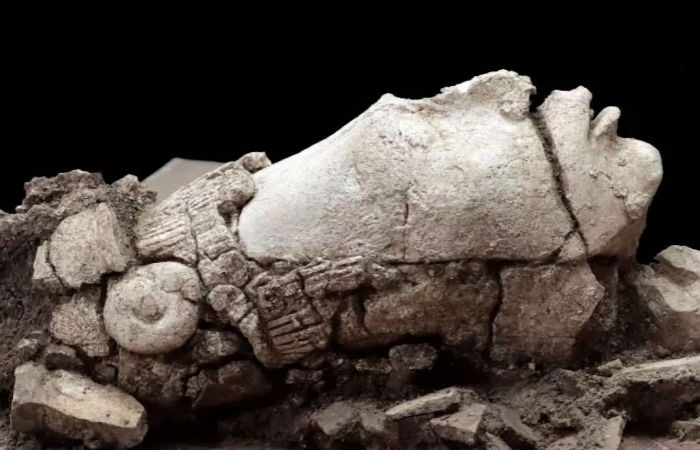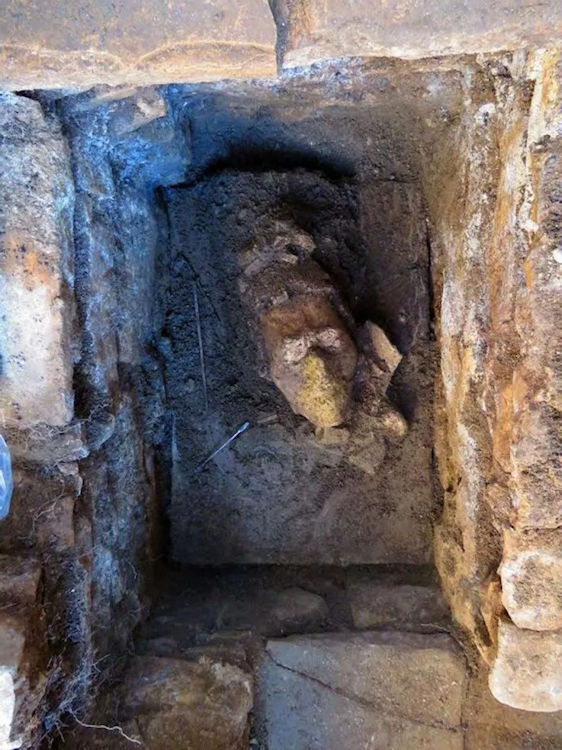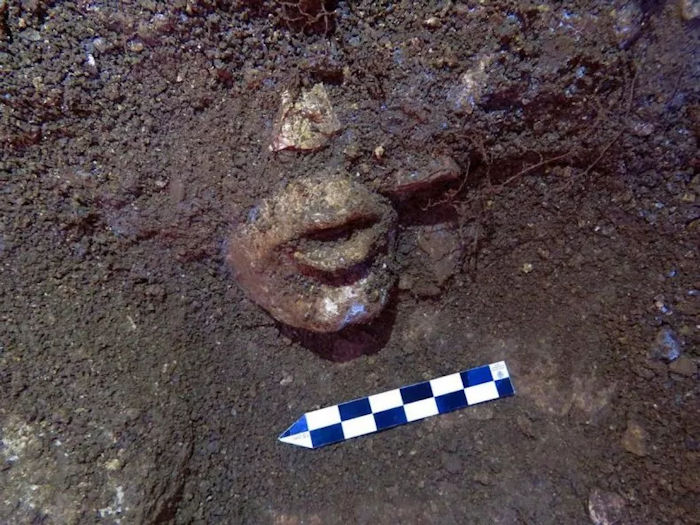Conny Waters – AncientPages.com – Maize has always been the most important food crop in the Maya. According to the ancient creation myth of the Maya people, the gods created the first humans from maize dough and their bodies were believed to be made from maize.

A sculpture representing a Mayan maize god dating back 1,300 years was discovered in the ruins of Palenque in southeast Mexico. Credit: INAH
As discussed previously on AncientPages.com, “the history of the Maize god can first be found in the Popol Vuh. This original myth has the Maize god being born, dying, and being resurrected from the Mayan underworld. It is most likely that the Maize god became so popular that the Mayan people depended a lot on maize for their dietary needs. In fact, there are over 40 types of Mayan or Mesoamerican maize agriculture forms.”
The Maize God who was known as Hun Hunahpu was undoubtedly an important deity of the Mayan pantheon and sculptures of him were made and worshipped by the ancient people.
Archaeologists in Mexico report they have unearthed a 1,300-year-old sculpture representing the head of a Mayan maize God. The artifact was found during conservation in the Maya city of Palenque which was once an important political center, which flourished between 226 and 799 C.E and was later abandoned around 900 C.E. Palenque, which is also known as “Lakamha” in the Itza language (which means “Flat-Place-River”), is well known for its Mayan architecture and sculptures.

The entire space would be closed off with earth and three small walls, leaving the head of the young maize god inside a kind of box. Credit: INAH
The National Insтιтute of Anthropology and History informed the artifact was found in Palenque facing east to west, “which would symbolize the birth of the maize plant with the first rays of the sun.”
They added: “the interdisciplinary team that made up the initiative, co-directed by archaeologist Arnoldo Gonzalez Cruz and restorer Haydee Orea Magana, observed a careful alignment of stones while they removed the filling of a corridor that connects the rooms of House B of El Palacio with those of the adjacent House F.”
The god’s head was found inside “a semi-square receptacle formed by three walls and, under a layer of loose earth, the nose and half-open mouth of the divinity emerged.”
INAH scientists explained that the space where the statue was found was at some point closed off symbolically, by “breaking off a portion of the pond’s stucco floor and removing part of the construction filling, to deposit a series of elements: vegetables, animal bones quail, white turtle, white fish and domesticated dog, shells, crab claws, worked bone fragments, pieces of ceramic, three fractions of miniature anthropomorphic figurines, 120 pieces of obsidian blades, some green stone beads, two beads made of shell, as well as seeds and small snails.”
The cavity was then sealed with loose stones.
According to INAH’s archaeologists, Carlos Varela Scherrer and Wenceslao Urbina Cruz the stuccoed head measured 45 cm (17 inches) in length and 16 cm (6 inches) in width, and 22 cm (8.6 inches) in height.

Formed by three walls – and under a layer of loose earth — emerged the nose and half-open mouth of the divinity. Credit: INAH
It has graceful characteristics: the chin is sharp, pronounced and split; the lips are thin and project outwards, the lower one slightly down and showing the upper incisors.
“The cheekbones are fine and rounded; and the eyes, elongated and thin.
Of the wide, long, flattened and rectangular forehead, other significant elements include the fragments of a tripod plate on which the sculpture was placed,” the researchers said.
The sculpture was part of “an offering that was placed on a pond, emulating the entrance of the deity to the underworld, in an aquatic environment,” the insтιтute added.
See also: More Archaeology News
The discovery “allows us to begin to know how the ancient Maya of Palenque constantly relived the mythical pᴀssage of the birth, death, and resurrection of the maize deity,” said researcher Arnoldo Gonzalez Cruz.
As the piece was found in humid conditions, it is in the process of gradually drying out before it is restored, the insтιтute said.
The experts have dated the piece to the Late Classic period (700-850 AD).
Written by Conny Waters – AncientPages.com Staff Writer





